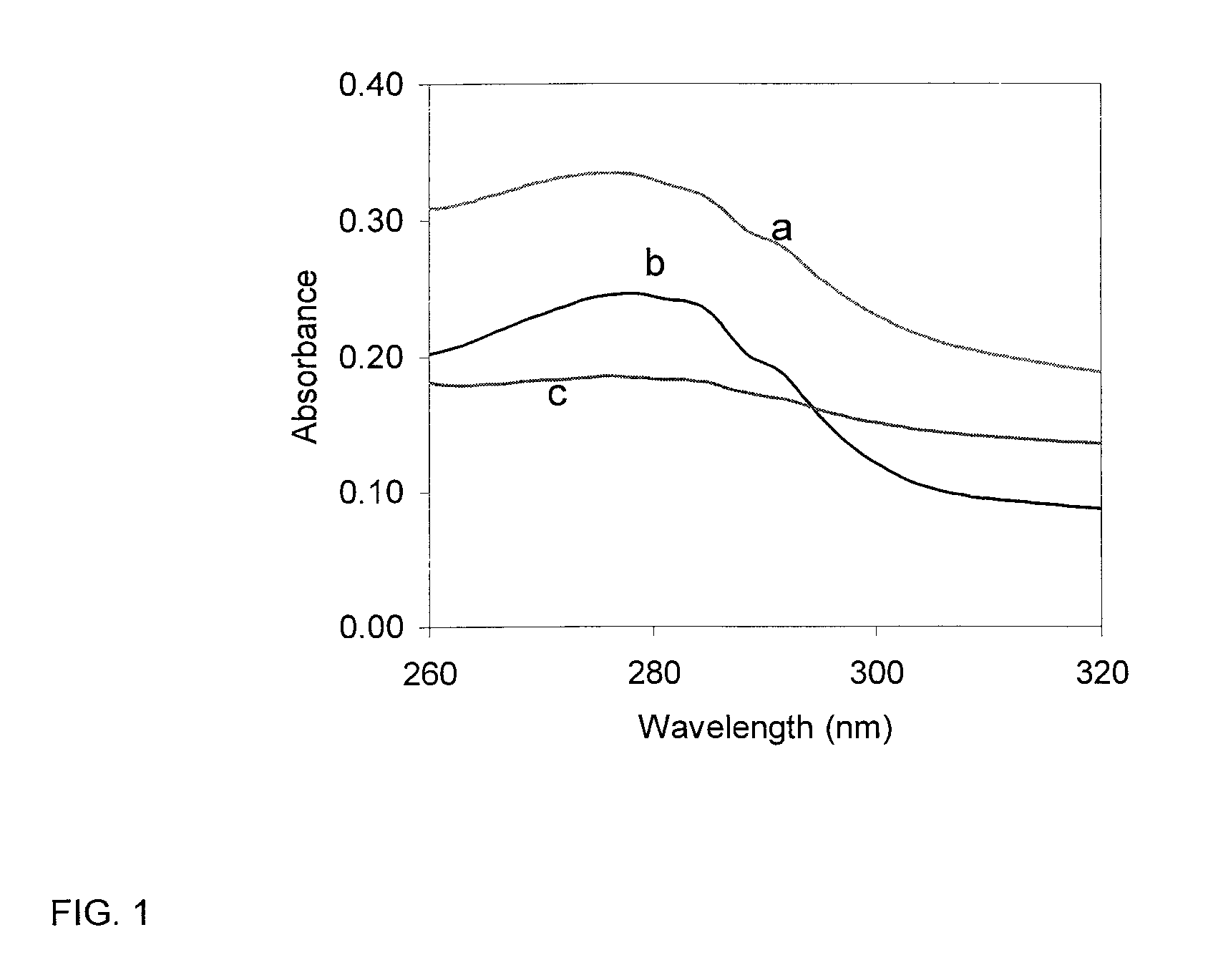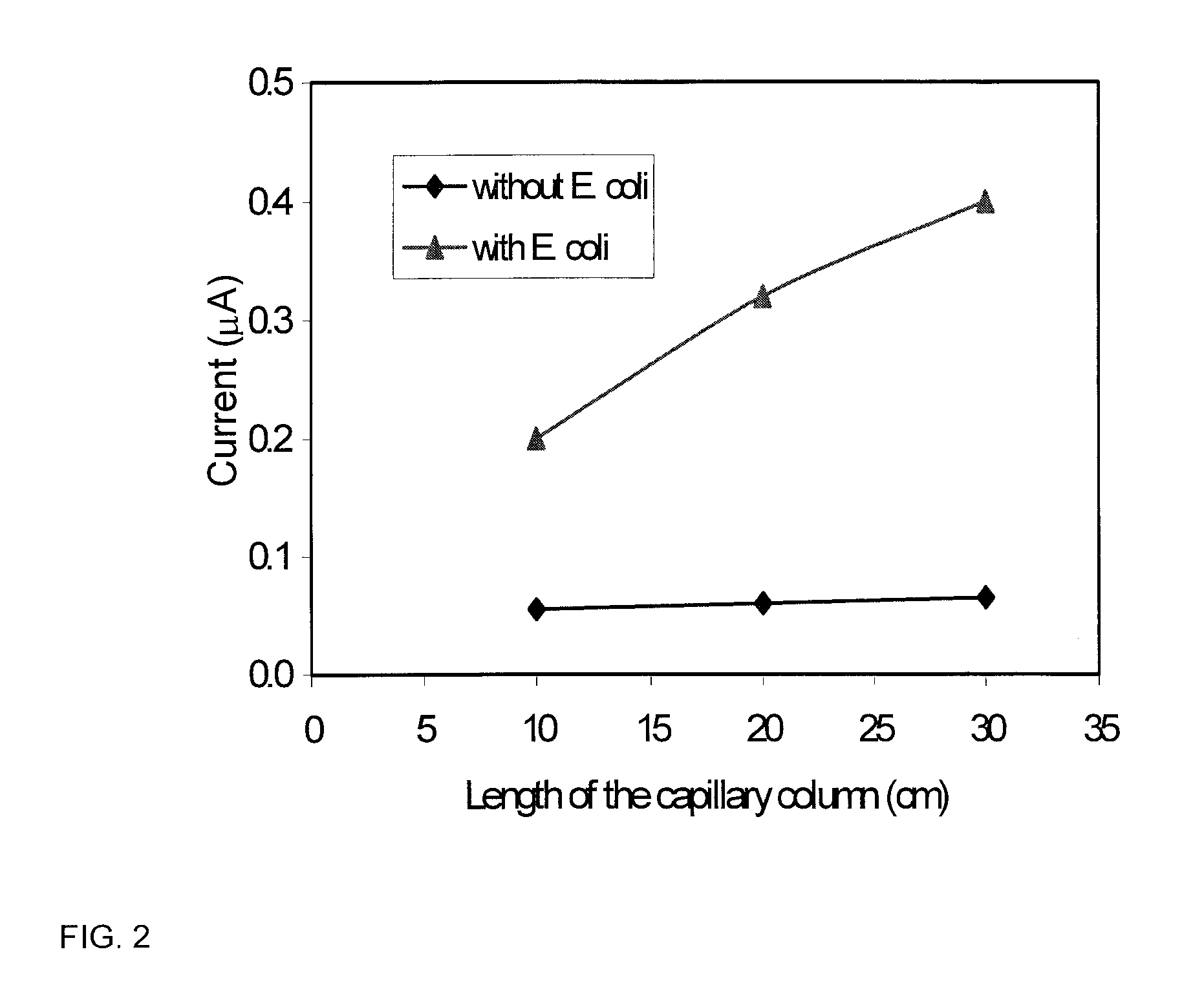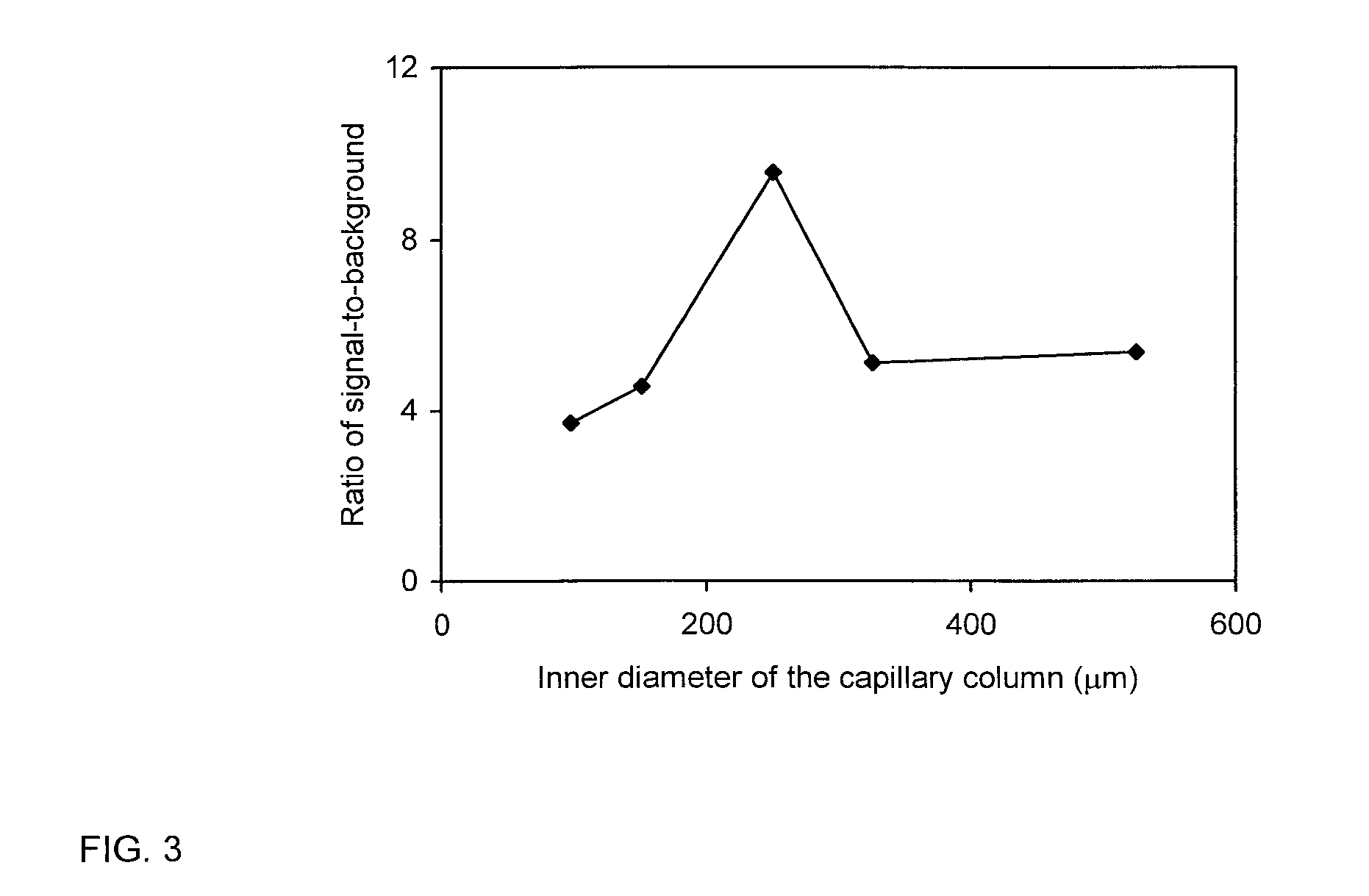Capillary-column-based bioseparator/bioreactor with an optical/electrochemical detector for detection of microbial pathogens
a bioseparator/bioreactor and optical/electrochemical technology, which is applied in the direction of peptide/protein ingredients, instruments, peptide sources, etc., can solve the problems of large economic burden for the industry, foodborne illness caused by pathogenic microorganisms poses a serious threat to public health, and blood stream infection and death
- Summary
- Abstract
- Description
- Claims
- Application Information
AI Technical Summary
Benefits of technology
Problems solved by technology
Method used
Image
Examples
example 1
Antibodies
[0067]Anti-E. coli O157:H7 antibodies (1 mg) and alkaline phosphatase-labeled affinity purified antibodies to E. coli O157:H7 (0.1 mg), purchased from Kirkegaard & Perry Laboratories (Gaithersburg, Md.), were rehydrated with 1 ml of 50% glycerin water solution. Dilution of 1:10 of the antibodies and 1:100 of the alkaline phosphatase-labeled antibodies were prepared before use.
[0068]Primary and secondary antibodies, anti-Salmonella antibodies and alkaline phosphatase-labeled affinity purified anti-Salmonella antibodies, were obtained from Kirkegaard & Perry Laboratories (Gaithersburg, Md.). One mg of anti-Salmonella antibodies and 0.1 mg of alkaline phosphatase-labeled affinity purified anti-Salmonella antibodies were rehydrated with 1 ml of 50% glycerin water solution to obtain 1:10 and 1:100 dilutions, respectively.
[0069]Tyrosinase (EC 1.14. 18. 1, from mushroom, 3000 units / mg), bovine serum albumin (BSA), horseradish peroxidase (EC 1. 11.1. 7, type II, 240 units / mg), tri...
example 2
Bacteria and Culture Plating Methods
[0071]Escherichia coli O157:H7 (ATCC 43888) as a target pathogen and Salmonella Typhimurium (ATCC 14028) and Listeria monocytogenes (FDA 10143) as competing bacteria were obtained from American Type Culture Collection (Rockville, Md.). The pure culture of E. coli O157:H7, S. Typhimurium, and L. monocytogenes were grown in brain heart infusion (BHI) broth (Remel, Lenexa, Kans.) at 37° C. for 20 hours before use. The culture was serially diluted to 10−8 with physiological saline solution (PSS) and viable cell number was determined by plate count. Microbial tests for E. coli O157:H7 was performed by surface plating 0.1 ml of dilutions on MacConkey sorbitol agar (remel, Lenexa, Kans.). After incubation at 37° C. for 24 hours, E. coli O157:H7 colonies on the plate were counted to determine the number of colony forming units per ml (CFU / ml). Cell numbers of S. Typhimurium and L. monocytogenes in pure culture were determined by the same method with the e...
example 3
Capillary Column Modification and Antibody Immobilization
[0073]The desired antibody was immobilized onto the inner wall of columns basically according the method described by Liu and Li [Y. Liu, Y. Li, Anal. Chem. 73 (2001) 5180]. Using a series of syringes on a Harvard PHD 2000 advanced syringe pump (Harvard Apparatus, Holliston, Mass.), a series of fused-silica capillary columns (3 m) were treated with 1 M NaOH and 1M HCl, and dried out overnight. Dried capillary columns were treated with 3-aminopropyltrimethoxysilane (1% methanol solution), incubated for 70° C. for 4 hours to allow the formation of the aminopropyl derivative of glass, rinsed with methanol, dried overnight, reacted with glutaraldehyde, and washed with PBS (pH=7.4) solution. Our study showed that the concentration of antibodies had great effect on the detection limit. Therefore, 0.1 mg / ml concentration of the antibody was used in order to decrease the detection limit. For E. coli detection, 0.4 ml of anti-E. coli O...
PUM
| Property | Measurement | Unit |
|---|---|---|
| length | aaaaa | aaaaa |
| length | aaaaa | aaaaa |
| inner diameter | aaaaa | aaaaa |
Abstract
Description
Claims
Application Information
 Login to View More
Login to View More - R&D
- Intellectual Property
- Life Sciences
- Materials
- Tech Scout
- Unparalleled Data Quality
- Higher Quality Content
- 60% Fewer Hallucinations
Browse by: Latest US Patents, China's latest patents, Technical Efficacy Thesaurus, Application Domain, Technology Topic, Popular Technical Reports.
© 2025 PatSnap. All rights reserved.Legal|Privacy policy|Modern Slavery Act Transparency Statement|Sitemap|About US| Contact US: help@patsnap.com



